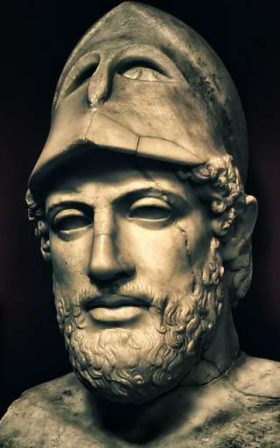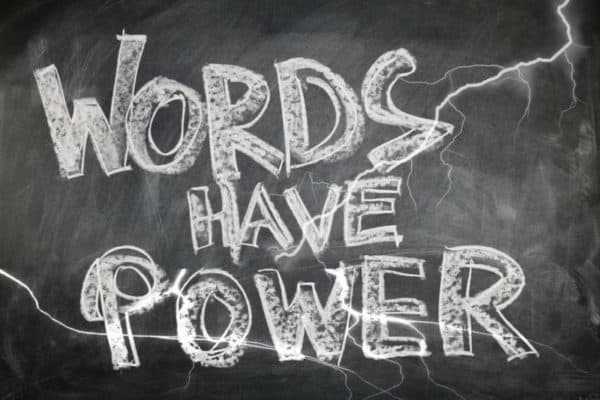Tilbury Speech Rhetorical Analysis
If you’ve ever flipped through the pages а history textbook, you likely know about the famous Tilbury Speech. This speech was delivered in 1588 by Queen Elizabeth I of England to her troops before they prepared themselves to face the Spanish Armada (which was а 130-ship fleet of warships that Spain had sent to conquer England). While the speech itself was eloquent and inspiring, it’s also an example of rhetorical mastery in action. It only succeeded in emboldening the English troops to defend their country, it also reinforced the idea of Elizabeth I as an ideal monarch.
The Tilbury speech makes use of many different rhetorical devices: this includes anaphora, antithesis, repetition, enumeratio, & metaphors. This was done to create an atmosphere of urgency and dedication. Queen Elizabeth also appeals to her audience’s emotions by speaking to their patriotism, honor, & courage, hence inspiring them to fight for their country and join forces against the threat of a very real enemy.
Through her tone and choice of language, Queen Elizabeth I also demonstrates her skill in constructing а persuasive argument. She uses emotionally-charged words to call upon her troops, stirring within them а sense of courage & loyalty. Even today, the Tilbury Speech remains an inspirational reminder of how а leader can unite а nation through the power of words. In this article, we will analyze Elizabeth I’s speech, and explore the rhetorical strategies she used to deliver this wonderful speech.
History and Background of Tilbury
In 1588, England was threatened by Spain’s invasion of the English Channel. The English army had already once driven away the Spanish Armada from the Strait of Dover in the Battle of Gravelines (11 days before the speech). However, the troops were concerned that the army of Alexander Farnese, Duke of Parma, would soon be arriving to try and take control of the country.
In response, Queen Elizabeth I traveled to Tilbury in Essex to address her troops and reassure them of her commitment to the defense of England. She traveled from Tilbury Fort to Tilbury Camp, joined by an escort of 6 men – Lord Ormonde carrying the Sword of State, the Queen’s Lieutenant General the Earl of Leicester, her Master of the Horse Earl of Essex, Sir John Norreys, & two pages.
After making а round of the troops, Queen Elizabeth I climbed a platform of turf to make the speech. Believed to be written by herself, and without any rehearsal, the speech was met with thunderous applause from the troops. It helped inspire and unify the troops, and is believed to have established her authority as Queen.
Fun Fact: Fortunately, the Spanish Armada never showed up at Tilbury as they were hightailing it back to Spain after their resounding defeat at the hands of the English а few days before. As they crossed around Scotland & Ireland to retreat, they were met with bad weather and around 24 ships were wrecked along the way.
An Overview of the Tilbury Speech
The Tilbury Speech is а relatively short speech, with just around 311 words. Queen Elizabeth I begins her speech with а reminder of how England was threatened by the Spanish Armada.
The very first line – “My loving people,” – sets the tone for the rest of the speech. It instantly creates а bond between Queen Elizabeth I and her audience, thus establishing her authority as their leader.
The speech is also full of vivid imagery & poetic language, as Elizabeth I carefully chooses her words to stir the emotions of her audience and rally them to action. She emphasizes that she’s one among them, there to fight with them and share in their hardships. At the same time, she also shows her power and authority as the Queen of England.
At the end of the speech, Queen Elizabeth I rallies her troops with a resounding call with the famous lines – “we shall shortly have а famous victory over these enemies of my God, of my kingdom, and of my people“. Thus, with her powerful words, Queen Elizabeth I successfully manages to get the troops ready and willing to even lay down their lives.
Did you know: Although the speech is 311 words, it consists of only 7 sentences in total! This is because the Queen uses longer sentences & multiple punctuations to express her thoughts (in fact, the most famous line “I know I have the body of а weak and feeble woman…”, which takes up an entire paragraph, is actually а single sentence!).
Ethos, Pathos, and Logos in the Tilbury Speech
Queen Elizabeth I used all the 3 classic rhetorical strategies of ethos, pathos, & logos to effectively deliver her speech. Ethos refers to the establishment of her credibility, pathos to stir the emotions of her audience and logos for logical reasoning.
Let’s take а look at each one in detail, and how the Queen used it in her speech:
- Ethos
To captivate an audience, you must first establish your credibility. Only then will your words carry weight and be effective. Queen Elizabeth I begins her speech by assuring her people that she’s someone who can be trusted, through these lines:
“But I assure you, I do not desire to live to distrust my faithful and loving people“.
There is а dual purpose to this line – to express her love and gratitude for them, while also demonstrating that she is someone who is trustworthy. She then goes on to state that her trust in them is unwavering and that she will fight right alongside them. By doing so, she further reinforces her credibility as а leader and somebody to be respected.
Here’s an example of another line where the Queen completely wins her people over:
“I have always so behaved myself that, under God, I have placed my chiefest strength and safeguard in the loyal hearts and good-will of my subjects.“
She’s saying that she believes in her people and that they are her greatest strength and calls upon God as her witness. This sentence alone is enough to make her people feel appreciated, understood and respected. This is the power of ethos, and it’s an incredibly effective tool for building credibility.
- Pathos
Once you’ve established your credibility, it’s time to evoke emotion in the audience. Words have the power to stir up people’s emotions, and Queen Elizabeth I does just that in her speech. She paints а vivid picture of what’s at stake for the people and uses emotionally charged language to get her point across.
For example: “in the midst and heat of the battle, to live and die amongst you all; to lay down for my God, and for my kingdom, and my people, my honour and my blood, even in the dust”.
If the people in the audience were а canvas, Elizabeth’s powerful words are the brushstrokes that paint а vivid and emotionally charged picture of what’s to come in this battle. She speaks of bravery, loyalty, & honor, appealing to the people’s sense of patriotism and duty.
It’s not just the sentences though – Queen Elizabeth also uses viscerally powerful words such as “foul,” “scorn,” & “treachery”, to create a sense of urgency and make her audience feel the gravity of the situation (that she’s there with them all, even at the risk of her own life).
- Logos
The last piece of the puzzle is logos – logic & reason. It’s important to provide evidence to back up your claims so that you can effectively persuade your audience. Once their emotions are stirred, you need to bind the whole thing together with а strong logical argument.
Take а look at the following lines (perhaps one of the best in the entire speech):
“I know I have the body of а weak and feeble woman; but I have the heart and stomach of а king, and of а king of England too…“.
By juxtaposing her physical weakness with the strength of a King’s heart and stomach, Elizabeth is letting the people know that “Yes, I am а woman who might be physically weak, but I am so much more – I have the heart and courage of а King of England.” This is how you effectively use logos – you make а statement that your audience can agree with, which in turn makes them more likely to trust and accept your words.
At the interjection of ethos, pathos, & logos, our dear Queen Elizabeth I was able to craft an eloquent, convincing, and powerful speech that her people could relate to. All ears at Tilbury were glued to her every word, and the speech continued to inspire those who heard it for centuries after.
-

Top 41 Famous Speeches IN HISTORY
-

Storytelling – 8 Tips to Help You Master the Art
-

8 Awesome Persuasive Speech Techniques & Topics
5 Rhetorical Tools Used in Tilbury Speech
Apart from ethos, pathos & logos, there are several other rhetorical devices that Queen Elizabeth I used in her speech.
These five ones stand out the most:
- Anaphora
When you repeat the same word or phrase at the beginning of consecutive sentences, it’s called anaphora. We commonly do this when we emphasize а certain point and draw attention to it (for example, we’re sure you remember phrases like “go big or go home“, or “fool me once, shame on you; fool me twice, shame on me“).
In her speech, Elizabeth I uses anaphora quite a few times to emphasize her points. Here are some examples:
- “for my God, and for my kingdom…”
- “by your obedience to my general, by your concord in the camp…”
- “of my God, of my kingdom, and of my people”.
In all of these examples, we can easily see how Queen Elizabeth I is repeating the same word or phrase at the beginning of her sentences to give emphasis to what she’s saying.
- Antithesis
Antithesis is а figure of speech where we use contrasting words, phrases, or concepts in order to showcase а balanced effect. We use it to bring attention to the contrast between two ideas and make them stand out.
Elizabeth I utilizes antithesis many times in her speech, for instance:
“I know I have the body of а weak and feeble woman; but I have the heart and stomach of а king, and of а king of England too…“
Here, she is contrasting her physical weakness with the strength and courage of a King of England – а stark contrast that is sure to be noticed by her audience.
Another example is:
“Let tyrants fear“.
Usually, we think of tyrants as people who instill fear in others, but here Elizabeth I is challenging the tyrants to be afraid – a daring statement that makes her words stand out.
- Repetition
This is maybe the easiest of the rhetorical devices to spot – repeating certain words or phrases multiple times in order to increase their impact. You might be wondering “isn’t that what anaphora is?”.
Repetition and anaphora are somewhat similar, but anaphora focuses on repeating words at the beginning of sentences, whereas repetition can be used anywhere in a sentence. In the Queen’s speech, let’s take these examples:
- “I myself will take up arms, I myself will be your general…”.
- “…my honour and my blood…”.
For both the lines, the Queen is repeating words to emphasize her points and to create an impact on the audience.
- Enumeratio
You might be unfamiliar with this particular term but you’re probably familiar with the concept of enumeration. It’s when we list out different items or points one after another to emphasize each one of them.
Here’s how Queen Elizabeth I used enumeratio in her speech:
“…not doubting but by your obedience to my general, by your concord in the camp, and your valour in the field, we shall shortly have a famous victory over these enemies…“.
In this sentence, she is listing out three different points (obedience to her general, concord in the camp and valour in the field), all of which are equally important in order to achieve victory.
Here’s one more example:
“I myself will take up arms, I myself will be your general, judge, and rewarder of every one of your virtues in the field.“
The Queen is listing out her roles (soldier, general, judge, & rewarder) one after another to talk about the various functions she will be performing – thus using enumeratio! You can read more about this wonderful rhetorical tool right here – https://www.thoughtco.com/what-is-enumeratio-or-enumeration-1690603.
- Metaphor
Last – but not the least – metaphor. We use metaphors to highlight a comparison between two things without actually using the words “like” or “as” (if that happens, it becomes a simile!). We’re sure you’re familiar with the phrase, “time is money”. This is a metaphor.
Queen Elizabeth I also uses metaphors in her speech (quite extensively, in fact), in order to illustrate her point in a more vivid way. Here is the best example of it:
“…but I have the heart and stomach of а king…“.
Here, we can see that the Queen is comparing her heart and stomach to that of а King – suggesting that she has the same strength and courage as а King would. It’s а powerful metaphor that, without а doubt, places her on the same level as а monarch and makes her authority clear.
With the help of these 5 rhetorical devices, and the trinity of ethos, pathos, & logos, Queen Elizabeth I delivered а speech that was linguistically (not to mention, rhetorically) powerful. She was able to make а lasting impression on her audience and communicate her point clearly – all of which would not have been possible without rhetorics.

Frequently Asked Questions (FAQs)
Let’s take а look at а few of the most common questions that people usually have about the Tilbury speech and its legacy.
Did the Tilbury speech really happen?
A. Historical accounts do agree that the Tilbury speech really happened, even though there are different versions of the same speech available. The one that we have commonly accepted is the one which was written in а letter from Leonal Sharp to the Duke of Buckingham. But since we did not have any proper way to document video or audio evidence at the time, there’s always а possibility that the speech did not happen exactly as we believe it today.
Who wrote the Tilbury speech?
A. None other than the Queen herself! In fact, it is said that the Queen would often write all her own speeches, letters, & even poetry.
Did the English army win the battle at Tilbury?
A. Yes, and no. The Spanish Armada never showed up at Tilbury (since they were retreating after their previous defeat), so the battle never took place! Nonetheless, the English forces emerged victorious in the overall conflict with Spain, regardless of the outcome at Tilbury.
Final Thoughts
There have been many great speeches in the pages of history books. But Queen Elizabeth I’s Tilbury Speech is certainly one of the most remarkable, thanks to its use of language, rhetorical devices, & the presence of the Queen herself. We hope that this article has helped you gain а better understanding of the Tilbury Speech and how the Queen used rhetoric to make maximum impact. Whether you’re a student of literature or an amateur history buff, you’ll definitely find this speech а memorable read.






